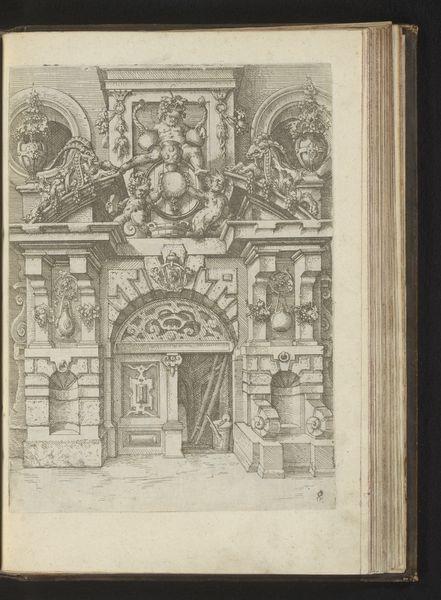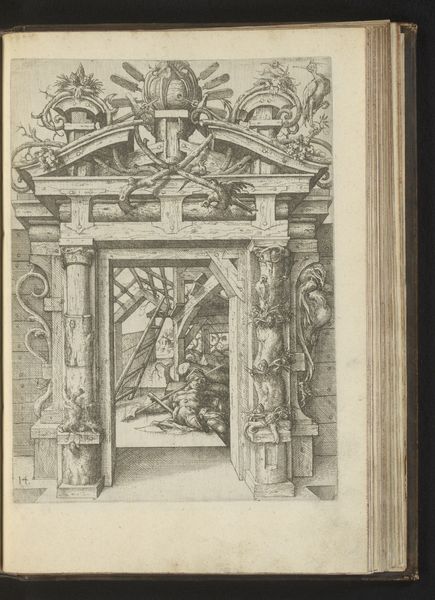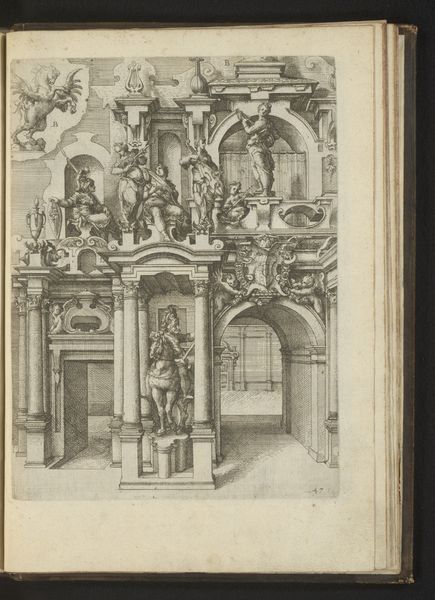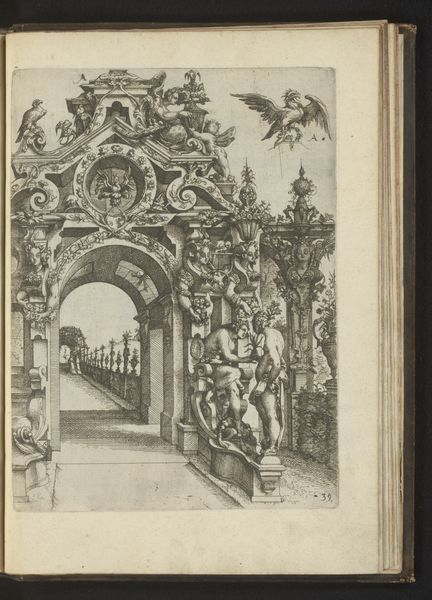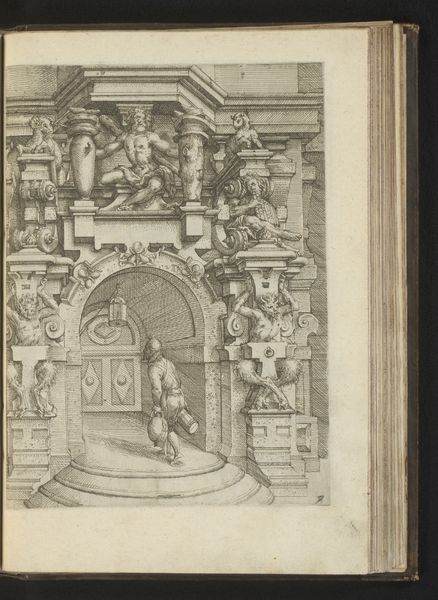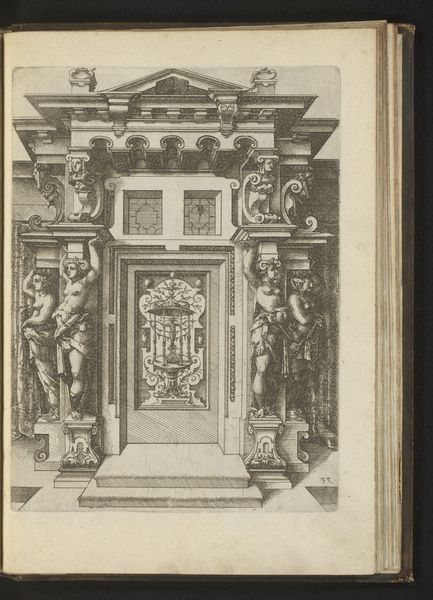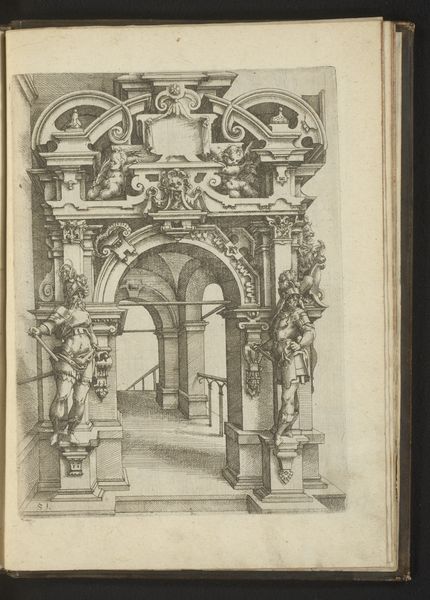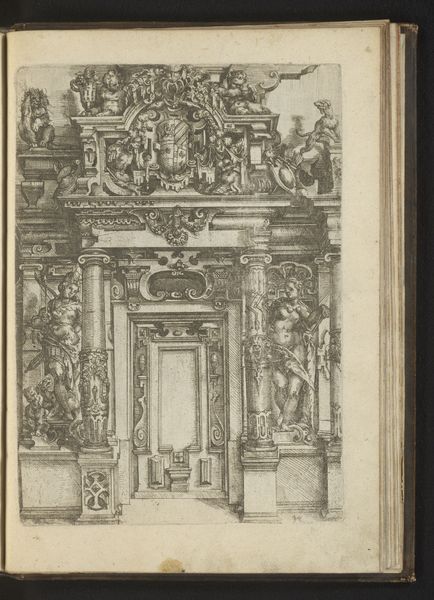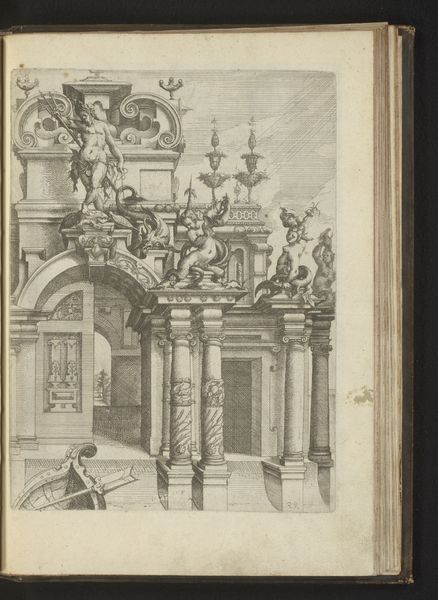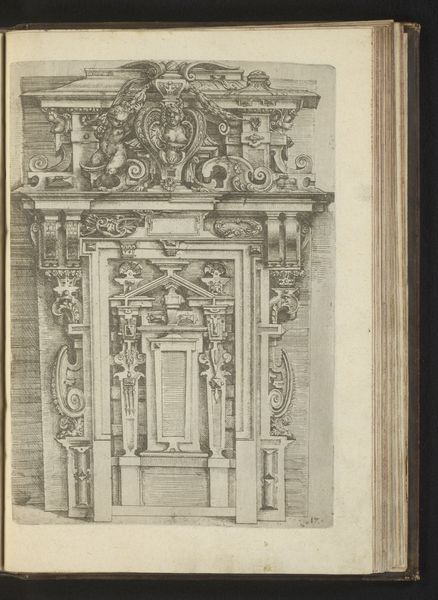
Ruïne van een poort met daarop herten, honden, leeuwen, vogels, eekhoorns, vleermuizen, beren, reptielen, bokken en op het fronton een man en vrouw met kinderen 1593 - 1595
0:00
0:00
drawing, print, ink, engraving
#
drawing
# print
#
perspective
#
figuration
#
11_renaissance
#
ink
#
geometric
#
history-painting
#
northern-renaissance
#
engraving
Dimensions: height 246 mm, width 185 mm
Copyright: Rijks Museum: Open Domain
This engraving by Wendel Dietterlin, executed around 1593, presents a ruined gate teeming with an astonishing array of creatures: deer, dogs, lions, and more. These are not mere decorations. Animals carry profound symbolic weight across cultures. Consider the lion, a symbol of strength and royalty found in ancient Near Eastern art, then reappearing in medieval heraldry, and even gracing modern national emblems. Its constant presence speaks to a primal human fascination with power. Note how Dietterlin populates his ruin with it. Similarly, the family on the fronton carries a timeless significance. These motifs echo through time, evolving in meaning but retaining their core emotive power. They tap into a deep, collective memory, triggering subconscious associations. This image exemplifies the cyclical nature of cultural symbols, constantly resurfacing and adapting across the vast expanse of history.
Comments
No comments
Be the first to comment and join the conversation on the ultimate creative platform.

